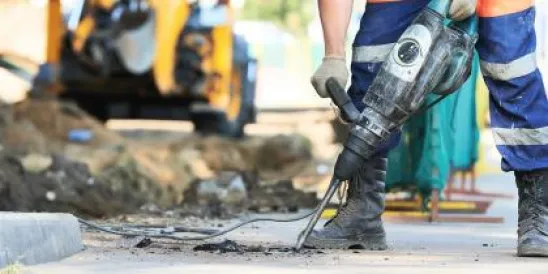On November 16, 2020, the Center for Disease Control (CDC) clarified its guidance permitting critical infrastructure workers to return to work before the end of the standard 14-day quarantine period following exposure to COVID-19. In this updated guidance, the CDC reiterated its standard recommendation that all individuals known to be exposed to a person with suspected or confirmed COVID-19 should quarantine for 14 days, with the possible limited exception of asymptomatic critical infrastructure workers who have not tested positive for SARS-CoV-2 (“COVID-19”).
While earlier CDC guidance allowed critical infrastructure employers to consider allowing workers who were exposed but tested negative to continue to work when necessary to preserve the function of critical infrastructure workplaces; in the most recent guidance, the CDC clarifies what circumstances might warrant use of the exception stating “that reintegrating exposed critical infrastructure workers who are not experiencing any symptoms and have not tested positive back into onsite operations should be used as a last resort and only in limited circumstances, such as when cessation of operation of a facility may cause serious harm or danger to public health or safety.”
The CDC stated it issued the updated guidance to align with new scientific evidence, evolving epidemiology and the need to simplify the assessment of risk; specifically:
-
Increased evidence that infected people pose a transmission risk without symptoms or before the onset of recognized symptoms;
-
Ongoing community transmission in many parts of the country;
-
A need to communicate effectively to the general public; and
-
Continued focus on reducing transmission through social distancing and personal prevention strategies.
The CDC explains that “[r]eintegrating exposed workers who are not experiencing any symptoms and who have not tested positive back into onsite operations carries considerable risk to other workers because many people with COVID-19 are asymptomatic but can still spread disease, and tests are imperfect. Bringing exposed workers back should not be the first or most appropriate option to pursue in managing critical work tasks. Quarantine for 14 days is still the safest approach to limit the spread of COVID-19 and reduce the chance of an outbreak among the workforce.”
The new guidance also encourages all critical infrastructure employers to work with local health officials on any reintegration of exposed workers and reiterates the additional risk mitigation precautions required including pre-screening, on-site screening with temperature checks, ongoing health monitoring, cleaning and disinfecting, social distancing, and ensuring all employees wear cloth masks.
This new guidance follows a trend we have seen in some states. Since the initial CDC critical infrastructure worker guidance was issued in April, several states have adopted rules narrowing the circumstances under which critical infrastructure employers can allow asymptomatic exposed employees to continue to work. For example:
-
In New York, employees who are exposed to COVID-19 but remain asymptomatic can continue to work if “deemed essential and critical for the operation or safety of the workplace, upon a documented determination by their supervisor and a human resources representative in consultation with appropriate state and local health authorities.”
-
In Wisconsin, the Department of Health has not endorsed exposed, asymptomatic workers returning to work before a 14-day quarantine period, however, local health departments in Wisconsin are allowed to grant case by case exceptions.
-
In New Mexico, if an essential business would be forced to cease operations due to the quarantine of exposed, asymptomatic workers, then such workers may continue working if they test negative for COVID-19 and certain safety measures are met.
In light of the new CDC guidance, critical infrastructure employers should consider reviewing their policies and procedures for returning asymptomatic exposed employees back to work, keeping in mind that state and local orders, and guidance from state and local health departments and safety agencies, may impose different and more restrictive requirements. Among other things, employers should consider:
-
Articulating and documenting the impact on operations such as how and why business operations might cease and, if applicable, the potential impact on health and safety if exposed, asymptomatic employees are held out of work for a 14-day quarantine period.
-
Consulting with the local health departments on the reintegration of exposed workers.
-
Developing plans and protocols to implement additional safety precautions, including pre-screening, health monitoring, and preventive measures.
As always, employers must also continue to comply with all applicable federal OSHA and state equivalent workplace safety requirements.







 />i
/>i

